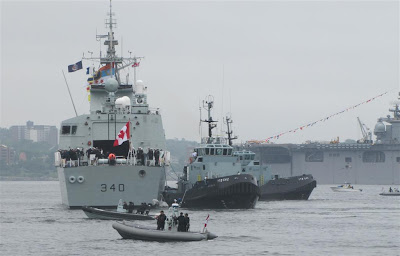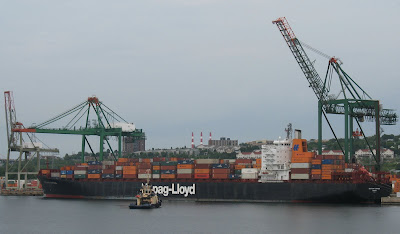.jpg)
All tugs in Halifax have been kept very busy this week with the arrival of warships from several navies for the International Fleet Review, taking place next week.
Point Valiant is getting underway at noon time to assist in berthing a US navy ship at HMC Dockyard.
A frequently asked question: Why don't navy tugs berth visiting warships?
There are several answers:
1. Foreign warships are using civilian pilots. Civilian tugs work well with civilian pilots. Navy tugs usually only work with naval berthing pilots, and use different commands and terminologies. Radioed orders to the tugs must be understood and acted upon instantly, so there should never be confusion about meaning. This could happen with naval berthing pilots using civilian tugs.
2. Navy tugs are busy with their own work, which includes berthing Canadian navy ships, and other Dockyard work such as moorings, berthings, and shifting yard craft to support the naval ships. There aren't enough navy tugs to berth an onslaught of foreign naval craft.
.jpg)




.jpg)
.jpg)
.jpg)
.jpg)
.jpg)